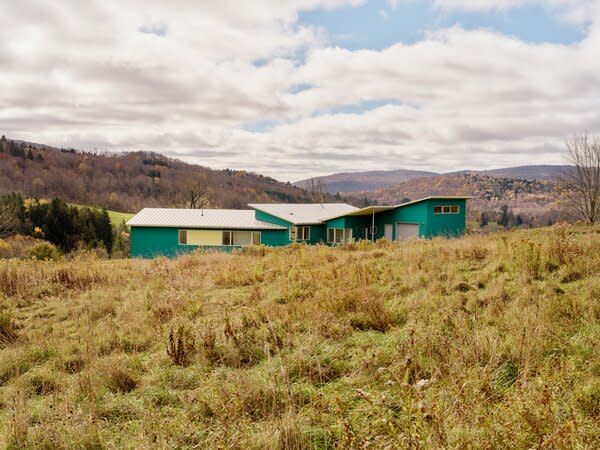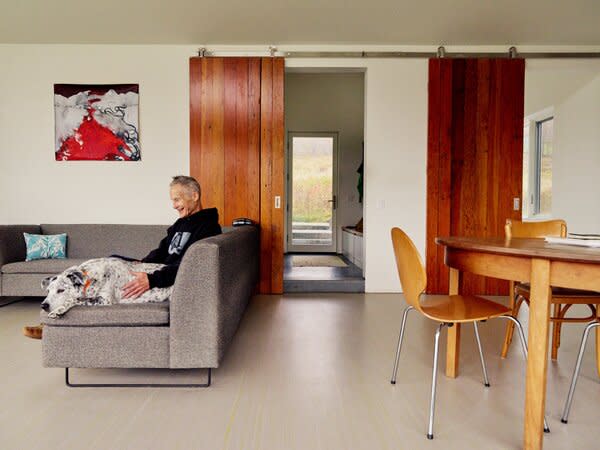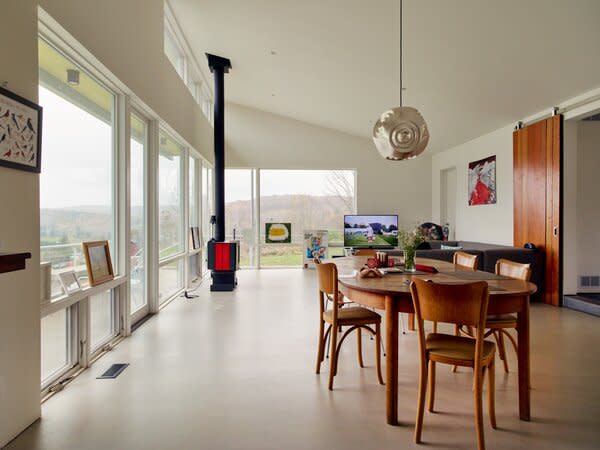We Check in With Dwell’s First Editor-in-Chief About a House 20 Years in the Making
The seed of an idea planted when Karrie Jacobs helped start our publication finally comes to fruition in her own Catskills home.

From where I sit when I write, I can see the hamlet of Andes, New York, a small town (population 1,301) nestled between steep hills. This house I share with my husband, Ed Kratt, sits near the top of one of those hills, on roughly 50 acres that were once part of a dairy farm. The farmers who owned the property, and whose cows continued to graze on it long after we bought it, still hay the fields, stockpiling silage to feed their herd in winter.
What I can’t see from here, but often imagine, is the straight line that links this spot in New York’s Catskill Mountains to an unconventional—and largely inexplicable—subdivision called Prospect New Town in Longmont, Colorado. I first visited the development in 2001, when I was editor-in-chief of Dwell and learned that the developer, an iconoclastic Texan named Kiki Wallace, and the development’s lead architect, Mark Sofield, had started adding modernist homes to a streetscape characterized by faux-historic houses.
The new homes were highly idiosyncratic. One, designed by Sofield and nicknamed the Rubik’s Cube House, owed its peculiar configuration to its corner location. The ground floor was angled to align with one street, and the second floor was twisted to align with the other. But the thing that really made the house and the 80-acre subdivision stand out was color. The homes were painted with a whole Crayola box of vivid shades chosen by Sofield’s wife, Kelly Feeney, formerly a curator at the Albers Foundation, who had a powerful bias against what she dismissed as "Band-Aid–colored houses."
Prospect was joltingly unconventional, meaning it was exactly how I thought the world should look. So I wrote about it. It was on the cover of the April 2002 issue of Dwell (America’s Coolest Neighborhood) and, later, in my first post-Dwell project, a book called The Perfect $100,000 House, which came out in 2006.
See the full story on Dwell.com: We Check in With Dwell’s First Editor-in-Chief About a House 20 Years in the Making
Related stories:




